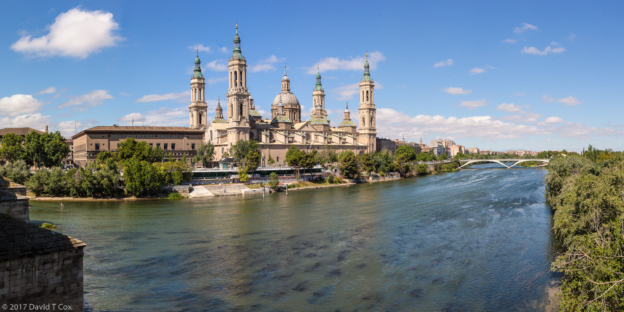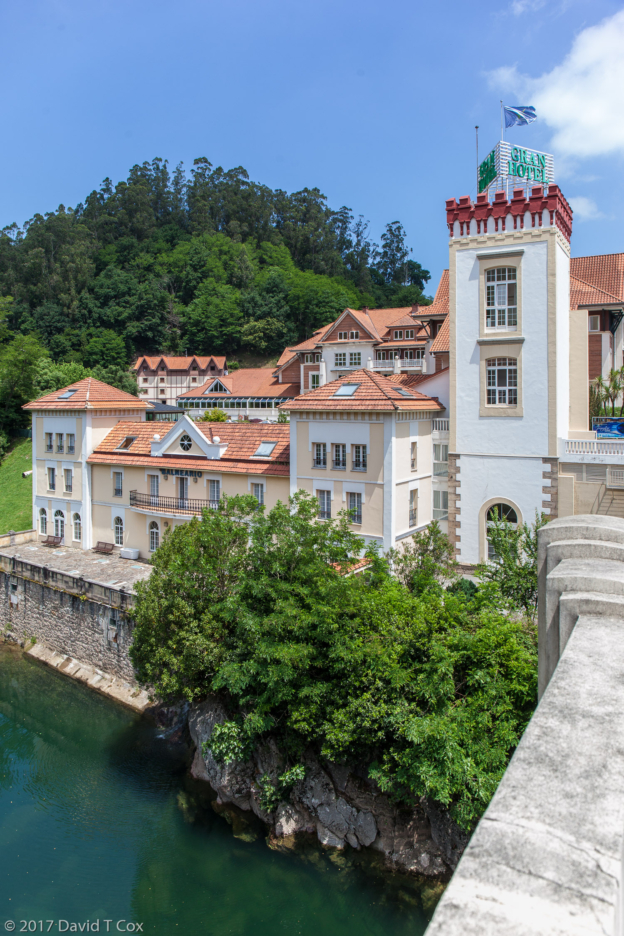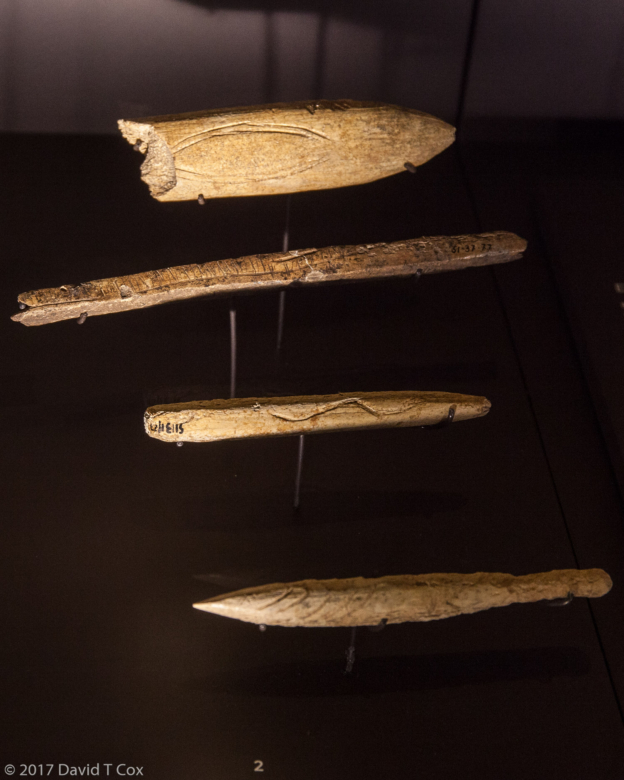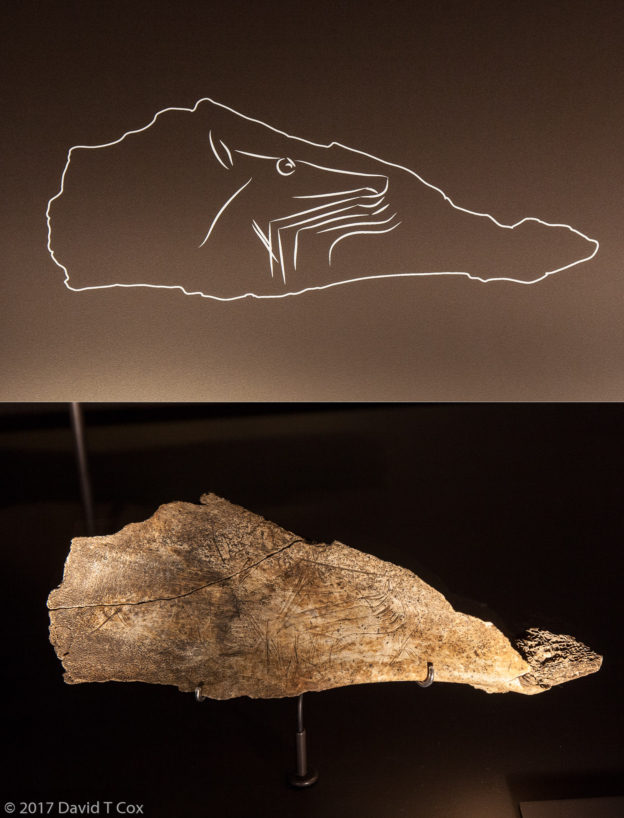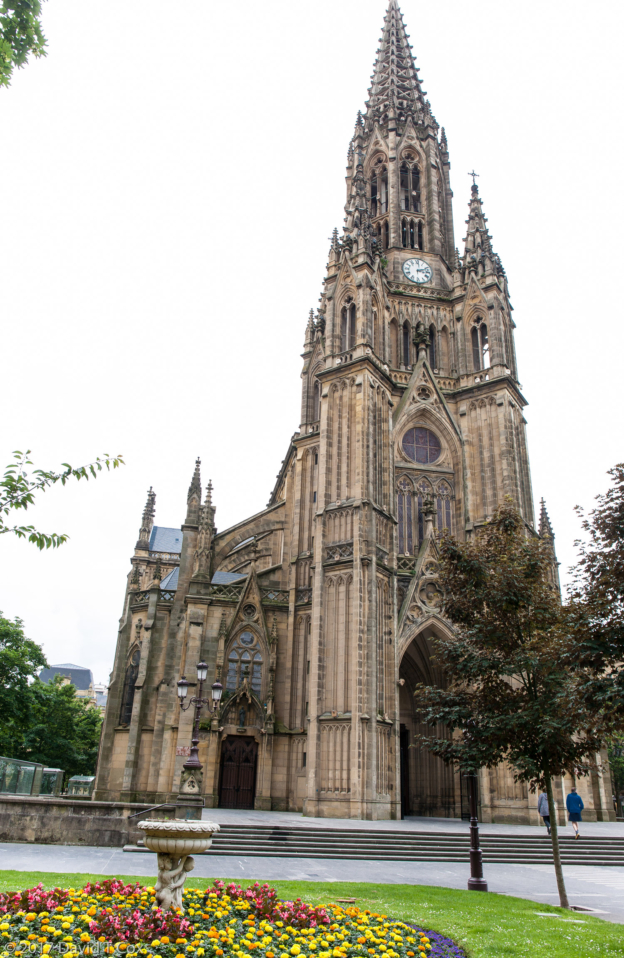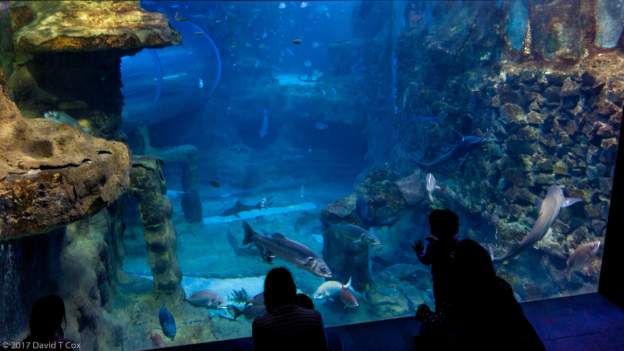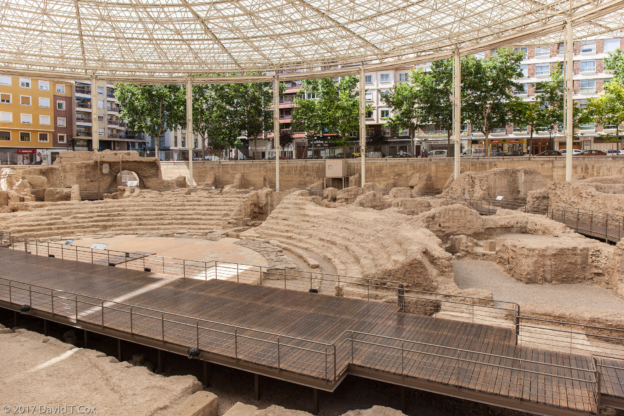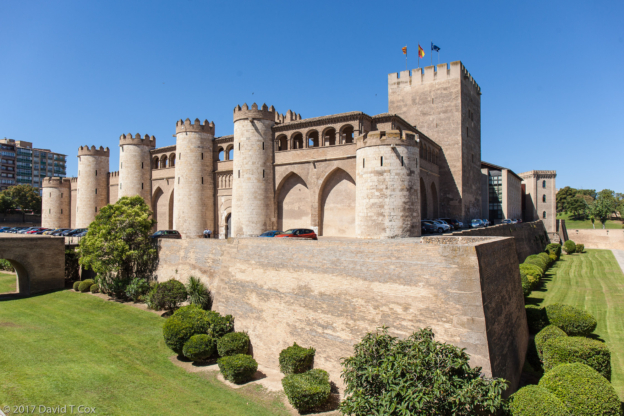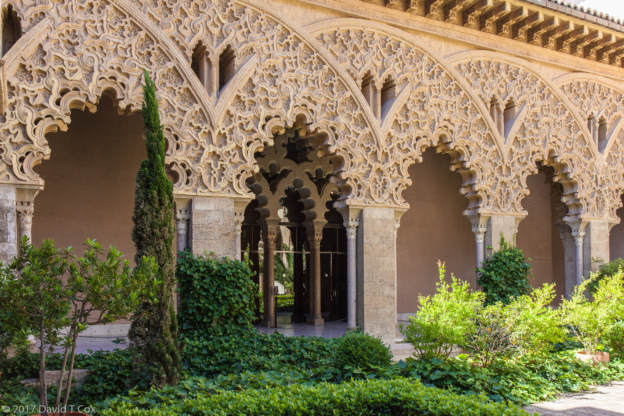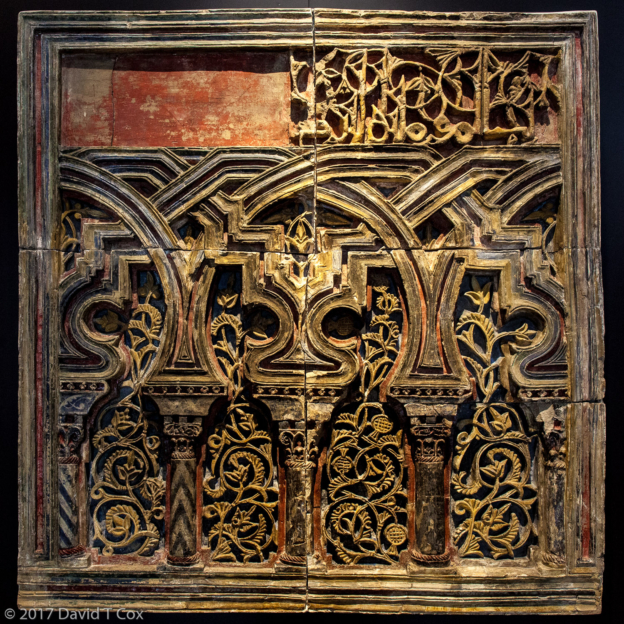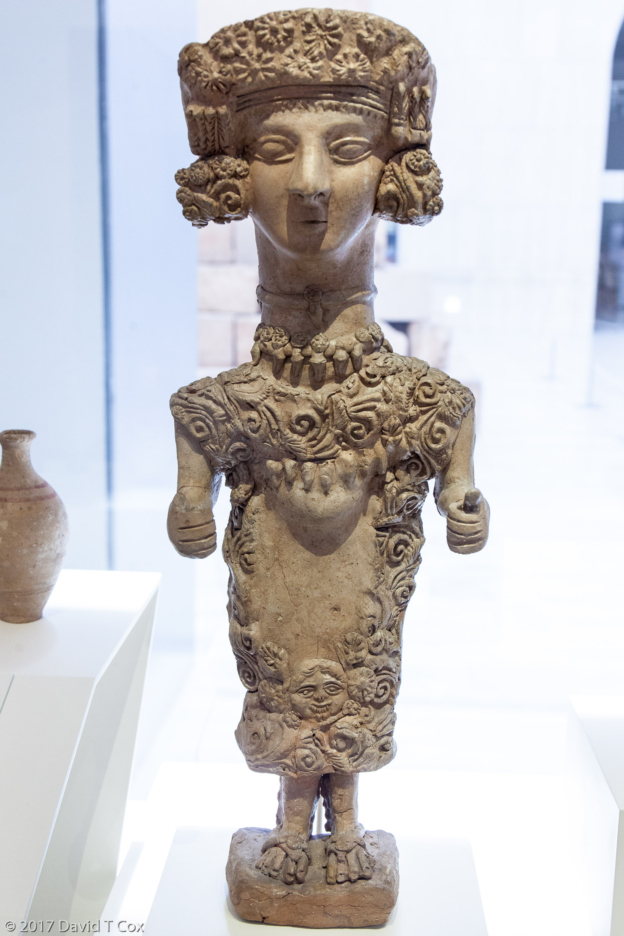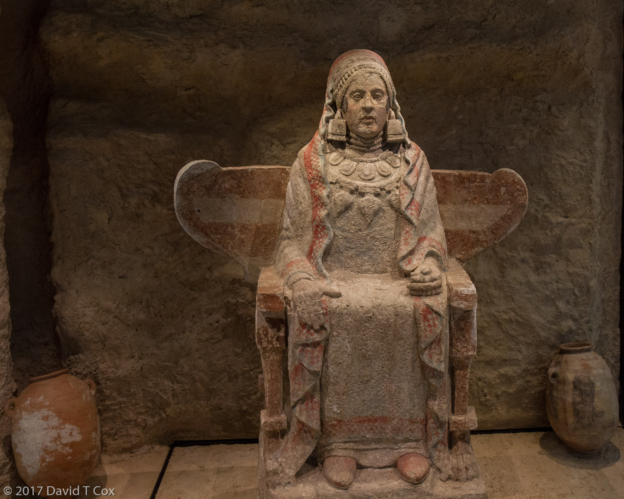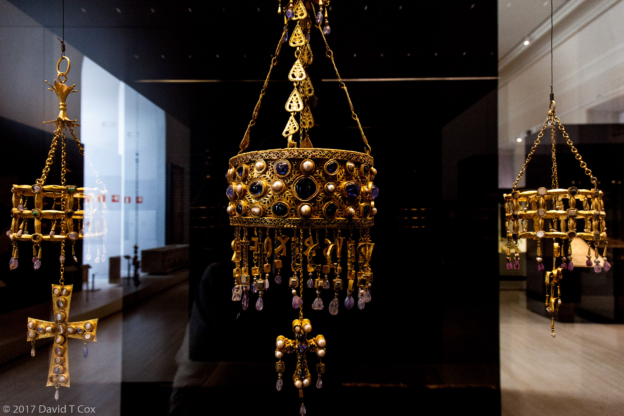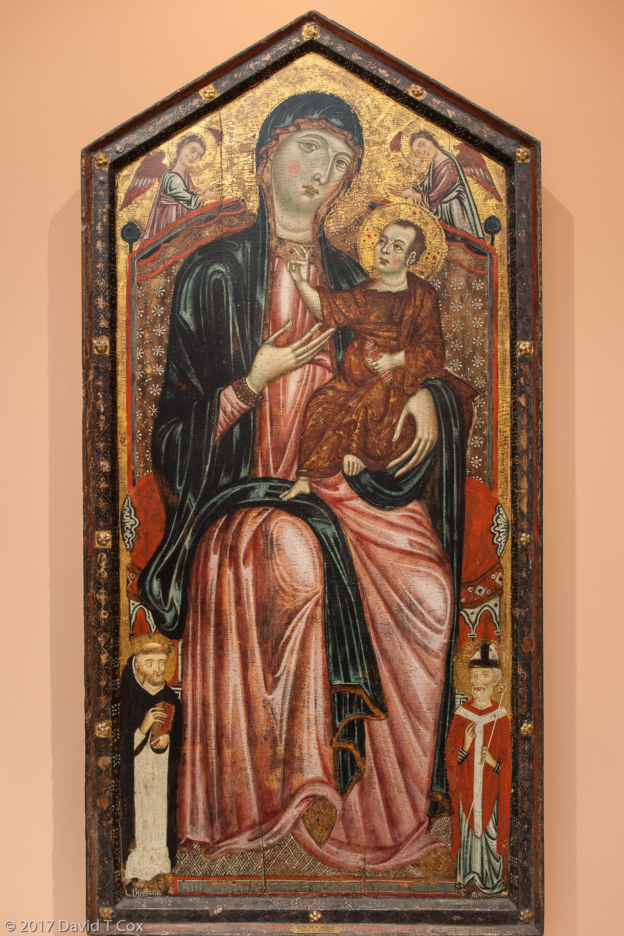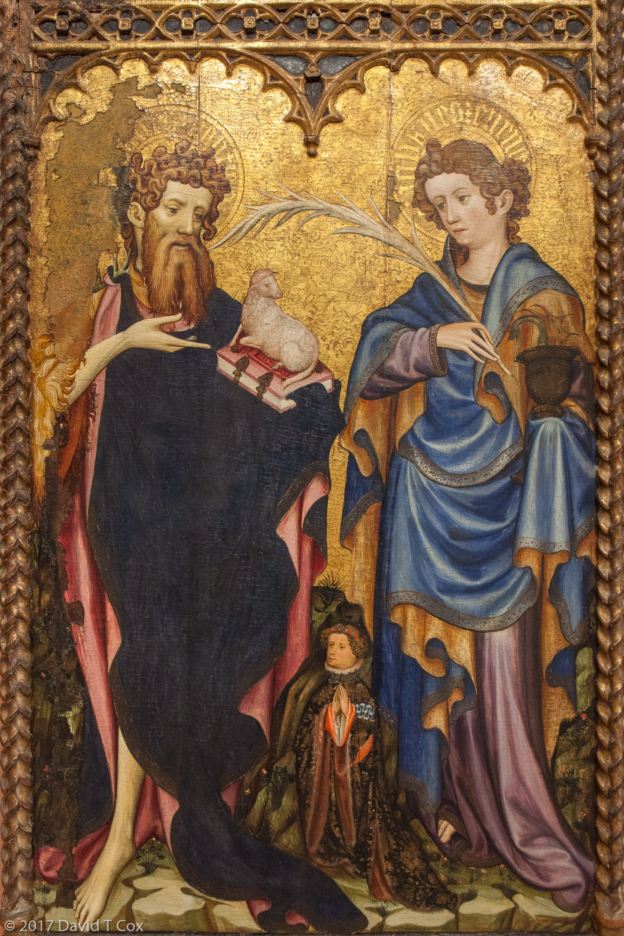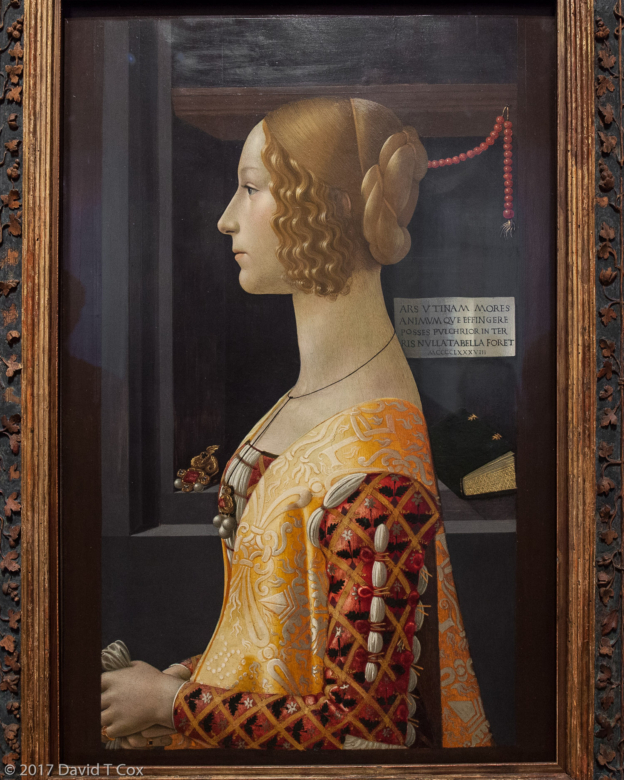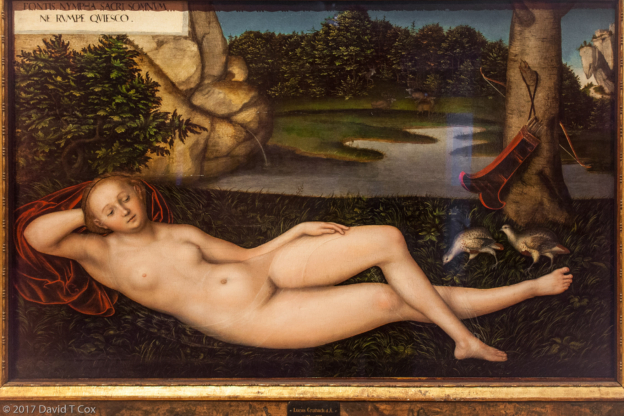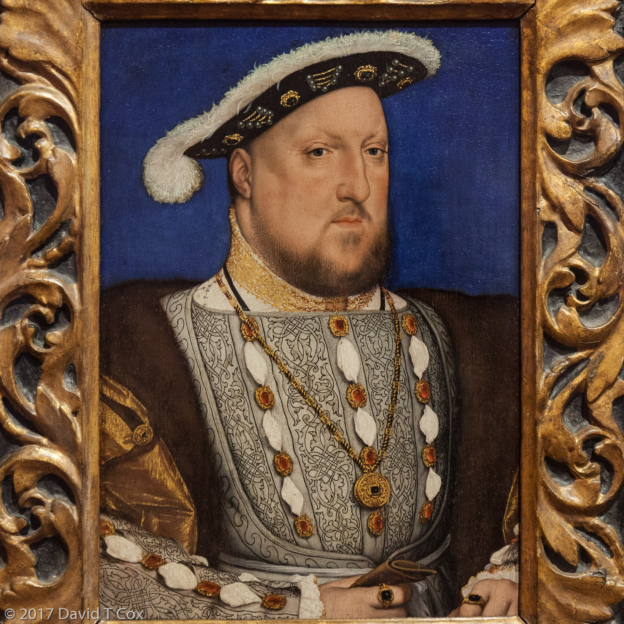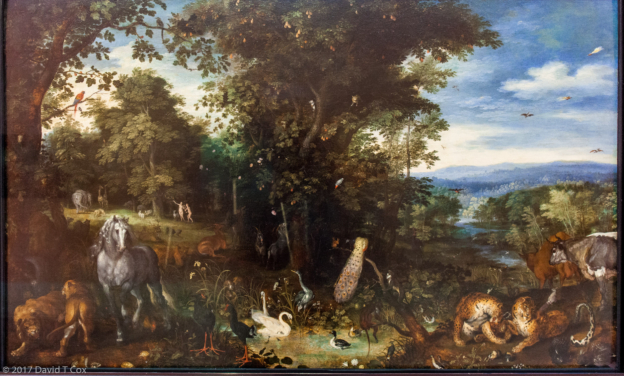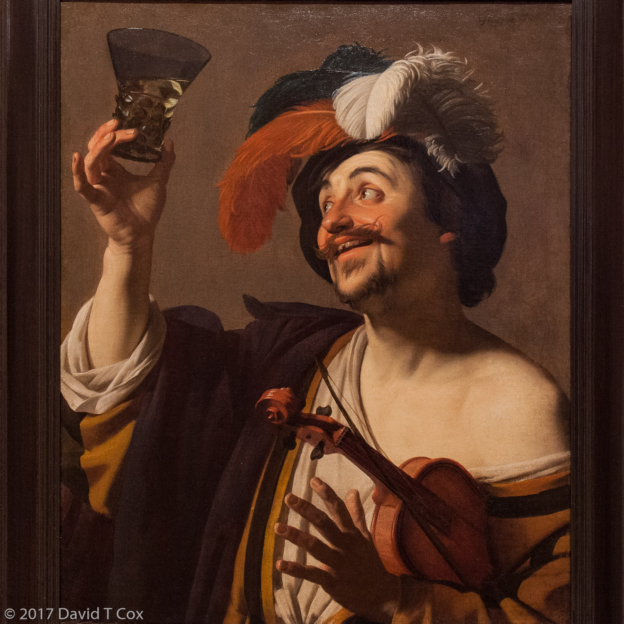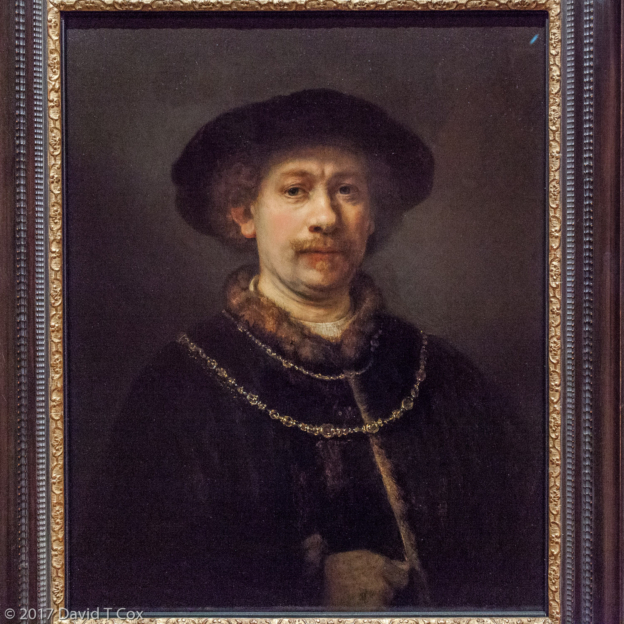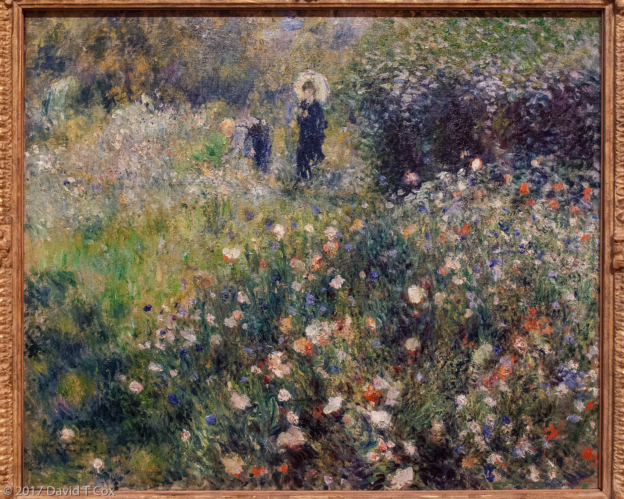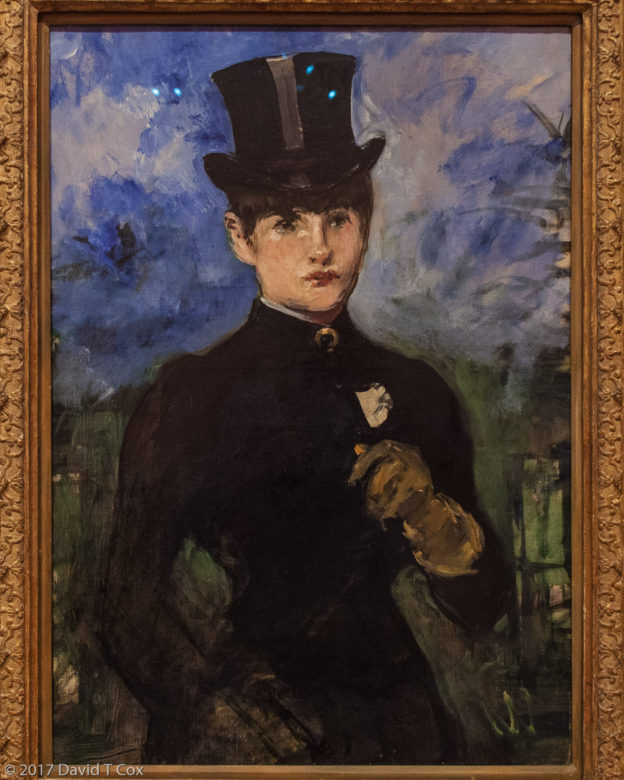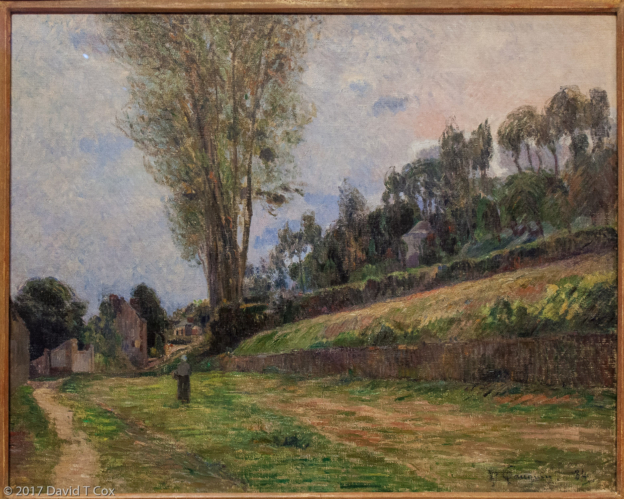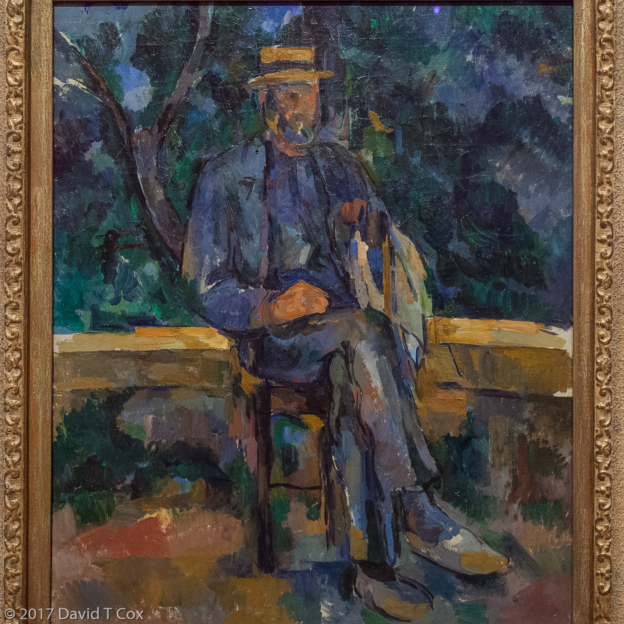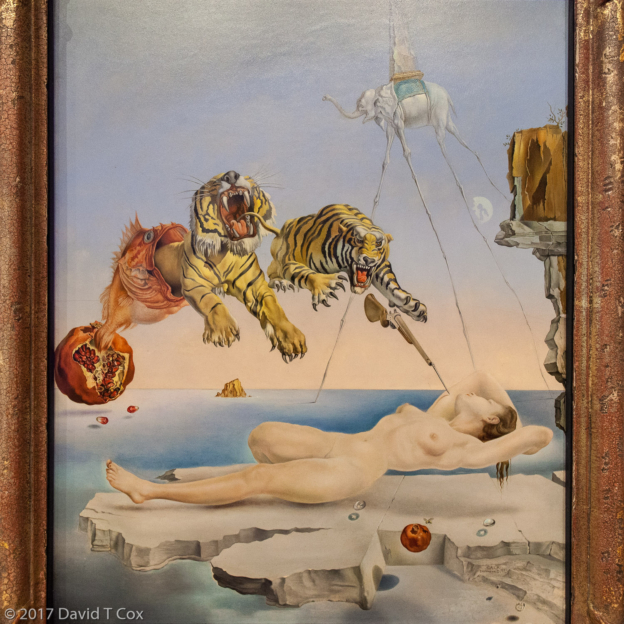All Photos Are Below the Travelogue Text
Click on Any Photo To Open Slide Show
To print the travelogue, right click anywhere on the page. Choose "Print" from your browser dialog box. You can choose Save to PDF in the browser print window.
Share your thoughts.
Email Dave - coxdavid55@hotmail.com
I last reported from Salamanca, where I spent 6 days eating and drinking too much. I traveled by train on Wednesday north through Valladolid, and then on to Santander on the northern Atlantic coast. From there I took a local bus the short distance south into the mountains to the tiny hamlet of Puente Viesgo. It is a well-known town by Spanish for thermal and cold baths, spas and beautiful scenery. For me it boasts the Monte Castillo Caves, two of which may be visited for their Paleolithic art.
The cave entrances are ringed around the upper part of a very unusual pyramid shaped mountain which climbs up from the beautiful valley and small running river below. The largest cave, El Castillo, contains a huge entrance chamber which had a large opening facing east overlooking the valley. The chamber had been occupied by Neanderthal and then early humans for 10’s of thousands of years. Inside the chamber archaeologists have been excavating for years, and now are working down into their 25th strata, dating back to 140,000 years ago. They have unearthed a large number of engraved bones and all forms of habitation evidence. Standing at the top at what was the current age level in the chamber, one can see the orange markers about 30 feet below where the strata layers were dated to 40,000 years ago, marking the passing of the Neanderthal phase and start of the modern humans in the cave.
Passing beyond the entrance chamber, one climbs through a newly man-made opening and enters multiple chambers with no natural light, which are filled with every form of stalactite and stalagmite, with stone columns and stone waterfalls of many different colors. In some of the most inaccessible places the paintings exist, consisting of outlines of various animals, including reindeer, horses and bison. Very often these utilize convex patterns in the rock walls along with cracks or natural lines, which give the animals three dimensional raised engraving appearances. Mostly red paint from iron oxide was used, along with some yellow and also charcoal black. The charcoal could be directly dated with carbon 14 dating, but the iron oxide could not – these older paintings were dated by dating the calcium carbonate lime build ups over portions of the paintings, giving the paintings dates of “at least as old as”.
The animal imagery all is 12,000 to 28,000 years old. The really old images are all iron oxide paint, most apparently sprayed onto the walls by blowing the wet colored powder through straws. The most common items are negative hands, where someone would place their hand onto the wall, and then the paint was blown onto the hand leaving a large red disk with the hand imaged negatively in the middle. The hands are of various sizes and with slightly different shapes, but most appear to be the left hand. One wall contains almost 60 of these images. Another long passage way is marked for about 40 feet along one wall at shoulder height with a series of a couple of hundred red disks, smaller than the ones with the negative hands. These negative hands and the disk lines are dated back to “at least” 40,800 years ago, this being the oldest dated paintings in the world (some recent discovery in an Indonesian cave also dates some paintings to 40,000 years ago). Fascinating to see. Upsetting that the Cantabrian Regional Government has banned photos, apparently solely so they can market their “official” photos. This is now a Unesco World Heritage Site, and the cultural highlights are deemed to belong to all humanity, not owned by the local government. Oh Well!
The weather had gotten worse, from mostly overcast in Salamanca, to heavy dark overcast much of the time in the mountains. I traveled from Puerto Viesgo on the 31st of May to Santander and from there on to San Sebastian, the major Basque town – for two days I had off and on rainfall and black overcast. Not so pleasant. Even trying to bar hop for the world famous pinxos (Basque artistic versions of tapas) was somewhat out of the question with the heavy winds howling in from the sea, blowing the fine rain perpendicular to the ground. I did spend several enjoyable hours visiting the famous aquarium on the northern marinas. From San Sebastian I traveled by train to Zaragoza, my first visit to the capital of the old Kingdom of Aragon.
After one full day of heavy rain, the weather finally cleared for beautiful blue skies and cool weather. Zaragoza was an ancient Roman city, founded as Caesar Augusta, from which the modern name derives. Under the old part of the modern city, in the last 40 years, archaeologists have excavated parts of the four major edifices of the Roman city, the Forum and Market, the Theater, the Baths and the River Port Warehouse. These four now constitute a series of 4 underground museums – very interesting. Zaragoza also is home to the Basilica del Pilar, a magnificent Baroque church with a huge central dome, 4 massive corner towers and around 8 colorful tiled smaller domes. From the stone bridge crossing the Rio Ebro it is an impressive site in the morning sunlight. The Moors also left their mark, most famously in their old palace now called the Aljaferia, since enlarged by the Catholic Monarchs, Ferdinand and Isabella. It is described as the best Islamic architecture outside of Al-Andalus in the south.
On the 8th I boarded my final train, this time the “El AVE” series train, from the massive Zaragoza station back to Madrid. El ave literally translates as “the bird”, but the name is actually a play on the word, as it is the acronym for “Alta Velocidad Espanol” or “Spanish High Speed”. The El AVE trains ply a new gauge of tracks between the largest cities, and are very fast by comparison to US transport. Whereas the regular intercity trains run up to 150km/hr. (almost 95mph), and the intermediate Alvia trains, which can run on the new and older tracks are much faster at up to 250km/hr. (155mph), the AVE trains run up to 310km/hr. (193mph), but cost considerably more for the usually relatively short distances. Still, it is quite an experience to watch the countryside pass outside the window – the speed of perspective change, even miles away, is unreal it is so fast, something akin to the couple of seconds just as a jet is lifting off the runway.
In Madrid again, without jetlag this time, I am taking it easy and revisiting some of my favorite museums. The Museum of Archaeology has been closed throughout my last two trips to Spain for renovations (it took years), and now is opened again. It is a wonderful museum with many of the greatest national treasures, from the earliest homo genus occupations of the great cave systems of the north, through the early Phoenician cities, the great Roman-Carthage battles and Roman settlements, on through the Visigoths, Moors and into the early middle-ages. Of most interest to me were the exhibits of objects from the Monte Castillo cave system I visited in Puente Viesgo, presumed Neanderthal prior to 40,000 years ago, and modern human thereafter; these objects include the famous collection of incised animal drawings made on deer scapular bones (the shoulder blades), which provided a relatively planar medium. These are referred to as the first examples of “portable” human art – over a dozen were discovered in the cave, all at the same age level of about 17,000 years ago (see photo). Also of interest were the large number of sculptures, mostly life-sized, of apparently deified women found among various Iberian grave-goods from the 5th to 3rd centuries BC (post-Phoenician, pre-Roman), as well as the treasure hoards of the Visigoth Kingdom (post Roman).
I also revisited the Thyssen Museum, one of the three great art museums of Madrid (and the world) which also include the del Prado (perhaps the world’s best art collection) and the Reina Sofia modern art museum. The Prado and Reina Sofia collections contain great depth in that for many of the world’s foremost painters the museums contain multiple adjacent rooms filled with just the works of each artist, such as Bosch, Rubens, Velazquez, Goya or Picasso. In contrast, the Thyssen, perhaps my favorite, contains a collection of unbelievable breadth – it contains examples of practically every famous painter in an immense collection, covering over 700 years starting around 1300 with mostly religious paintings on wood, through all the classical transformations and onto impressionism, surrealism, modern and pop art. It even has an entire room of just American art. All is arranged chronologically so one over hours can meander through the entire history of Western Art, seeing the famous examples of practically every famous painter whose name one can recognize. I have read that this probably is the finest private collection ever made, and now is owned by the Government of Spain. At the end of the attached photo collection I have included 19 photos of some of my favorites from the Thyssen Museum, in chronological order, creating a quick romp through the history of some of the finest paintings from 1300 through to the end of the 20th century, skipping the 18th century as that is more properly viewed in the Prado Museum, and heavily weighted to 19th and 20th century (more modern styles – impressionist, cubist, modern and even pop). As some of you know, I have little expertise in fine art, but do have a great many prejudices anyway – my favorites tend to the early and classical greats, with the evolution of painting from 1300 through the early 19th century, but this museum makes it fun to pass through what I consider the following devolution of art after about 1870. The masters include Mates, Ghirlandaeo, Cranach, Holbein the Younger, Rubens, Brueghel the Elder, Honthorst, Rembrandt, Renoir, Manet, Gauguin, Matisse, Cezanne, Hopper, Picasso, Dali, Pollack and Licktenstein.
This is the end of my trip as I return to the US this Wednesday, for the long flight back. Until later. Dave
- Gran Hotel Balneario, Puerto Viesgo, Spain
- Cueva El Castillo, main chamber excavated, Puente Viesgo, Spain
- incised bone implements and spear points, Cueva Castillo (2), 17,000 yrs ago, Archaeology Museum, Madrid, Spain
- incised animal drawing on scapular bone, Cueva Castillo, 17,000 yrs ago, Archaeology Museum, Madrid, Spain
- neogothic Cathedral, San Sebastian, Spain
- Aquarium, San Sebastian, Spain
- Basilica Nstr Senora Pilar panorama, Zaragoza, Spain
- Roman Theater ruins, Zaragoza, Spain
- Aljaferia Palace, 9th-10th C Muslim and 12th-15th C Christian, Zaragoza, Spain
- Aljaferia Palace, 9th-10th C Muslim and 12th-15th C Christian, Zaragoza, Spain
- Frieze from Aljaferia Palace, 11th C,,, Zaragoza, Museo Arqueologico, Madrid, Spain
- Lady of Ibiza, grave good of clay, 4th-3rd C BC , Museo Arqueologico, Madrid, Spain
- Lady of Elche, Iberian funerary urn limestone, c 500BC , Museo Arqueologico, Madrid, Spain
- Great Lady Offerant, Cerro Santos, 3rd C BC , Museo Arqueologico, Madrid, Spain
- The Lady of Baza, 4th C BC Grave sculpture, Museo Arqueologico, Madrid, Spain
- Guarrazar Hoard, Visigothic KIng’s crown, 621-672AD, Museo Arqueologico, Madrid, Spain
- Dave at Cerveceria Alemana, Plaza Santa Ana, Madrid, Spain,
- Madonna and Child, Maestro de la Magdalena, c1290, Thyssen Museum, Madrid, Spain
- St John and John the Babtist, Joan Mates, c1410, Thyssen Museum, Madrid, Spain
- Portrait of Giovanna Tornabuoni, Domenico Ghirlandaio, 1488, Thyssen Museum, Madrid, Spain
- Reclining Nymph, Lucas Cranach El Viejo, c1530-34, Thyssen Museum, Madrid, Spain
- Portrait King Henry VIII, Hans Holbein the Younger, 1534-36, Thyssen-Bonemisza Museum, Madrid, Spain
- Toilet of Venus w Cupid , Peter Paul Rubens, 1606-11, Thyssen-Bonemisza Museum, Madrid, Spain
- Garden of Eden, Brueghel the Elder, Jan, 1610-12, Thyssen-Bonemisza Museum, Madrid, Spain
- Merry Violinist, Gerit van Honthorst, c1624, Thyssen Museum, Madrid, Spain
- Self Portrait, Harmensz van Rijn Rembrandt, 1643, Thyssen-Bonemisza Museum, Madrid, Spain
- Woman with Parasol in Garden, Pierre Auguste Renoir, c 1873, Thyssen-Bonemisza Museum, Madrid, Spain
- Woman in Riding Habit, Edouard Manet, c1882, Thyssen Museum, Madrid, Spain
- Street in Rouen, Paul Gauguin, 1884, Thyssen Museum, Madrid, Spain
- Yellow Flowers, Henri Matisse, 1902, Thyssen-Bonemisza Museum, Madrid, Spain
- Portrait of a Farmer, Paul Cezanne, 1905-06, Thyssen-Bonemisza Museum, Madrid, Spain
- Hotel Room, Hopper, Edward, 1931 Thyssen-Bonemisza Museum, Madrid, Spain
- Bullfight, Pablo Picasso, 1934, Thyssen-Bonemisza Museum, Madrid, Spain
- Dream caused by flight of bee around pomegranate second before awakening, Salvador Dali, 1944, Thyssen-Bonemisza Museum, Madrid, Spain
- Brown and Silver I, Jackson Pollock, 1951 Thyssen-Bonemisza Museum, Madrid, Spain
- Woman in Bath, Roy Lichtenstein, 1963, oil on canvas, Thyssen-Bonemisza Museum, Madrid, Spain
To print the travelogue, right click anywhere on the page. Choose "Print" from your browser dialog box. You can choose Save to PDF in the browser print window.
Share your thoughts.
Email Dave - coxdavid55@hotmail.com
